
Square foot gardening rebuttal
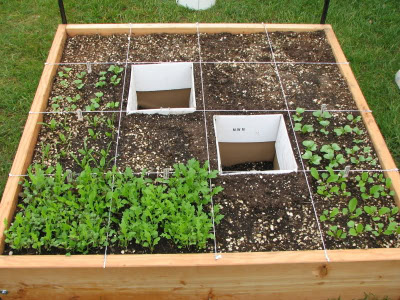 I
was thrilled when Ron wrote me an email to tell me the other side of
the story on square foot
gardening. All
of the images here are of Ron's garden, which he describes as follows:
I
was thrilled when Ron wrote me an email to tell me the other side of
the story on square foot
gardening. All
of the images here are of Ron's garden, which he describes as follows:
I feel
you’re a little harsh on square foot garden
method.
I hear constantly about property values.
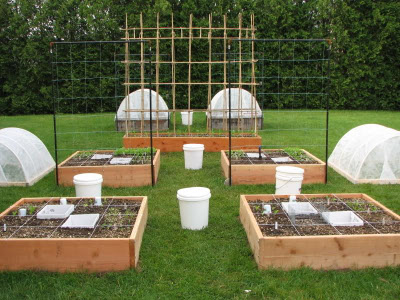
This started four years ago and I reside in Upstate NY.
While I live in suburbia, I have “pest” problems.
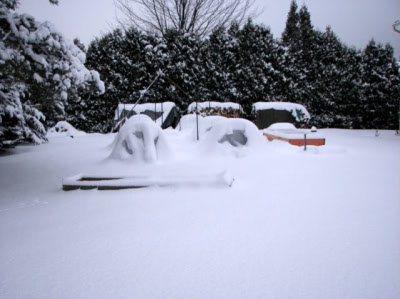 Our heavy clay soil that turns into muck in
the rains.
Our heavy clay soil that turns into muck in
the rains.
Having absolutely NO garden knowledge, I recalled PBS show,
Such a success, 3rd year, I added, 6 – 3’x8’ beds
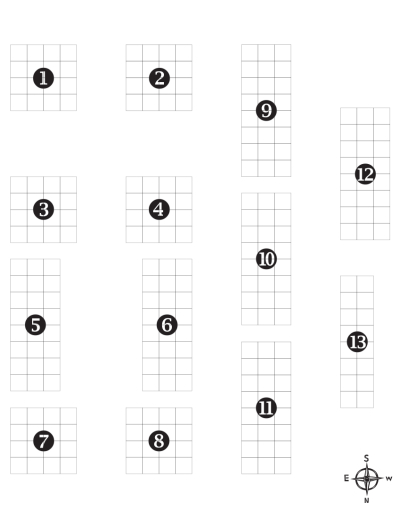 Each year I add more compost. Also add other
supplements
Each year I add more compost. Also add other
supplements
Pro vs. Con – every method has some of both
My goal is to try replicating the “Urban Homestead”
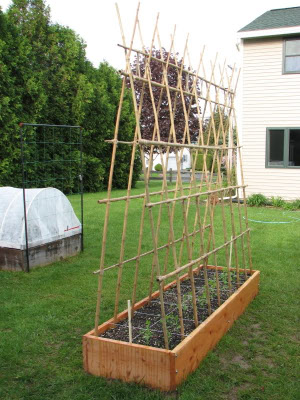
Also a strong follower of Mother Earth News.
I love growing a wide variety of specialty
I’ve attached latest layout in .pdf format [one page of which is reproduced above].
Hope this changes some of your thoughts.
Take care
Ron
I hear constantly about property values.

This started four years ago and I reside in Upstate NY.
While I live in suburbia, I have “pest” problems.
 Our heavy clay soil that turns into muck in
the rains.
Our heavy clay soil that turns into muck in
the rains.Having absolutely NO garden knowledge, I recalled PBS show,
Such a success, 3rd year, I added, 6 – 3’x8’ beds
 Each year I add more compost. Also add other
supplements
Each year I add more compost. Also add other
supplementsPro vs. Con – every method has some of both
My goal is to try replicating the “Urban Homestead”

Also a strong follower of Mother Earth News.
I love growing a wide variety of specialty
I’ve attached latest layout in .pdf format [one page of which is reproduced above].
Hope this changes some of your thoughts.
Take care
Ron
I'd love to hear from
other readers who have tried square foot gardening. What did you
think about the technique's pros and cons?
| This post is part of our Square Foot Gardening lunchtime series.
Read all of the entries: |
Want more in-depth information? Browse through our books.
Or explore more posts by date or by subject.
About us: Anna Hess and Mark Hamilton spent over a decade living self-sufficiently in the mountains of Virginia before moving north to start over from scratch in the foothills of Ohio. They've experimented with permaculture, no-till gardening, trailersteading, home-based microbusinesses and much more, writing about their adventures in both blogs and books.
Want to be notified when new comments are posted on this page? Click on the RSS button after you add a comment to subscribe to the comment feed, or simply check the box beside "email replies to me" while writing your comment.

When we lived in the city, I built an 8 foot by eight foot garden in a sometimes flooding back yard. Although I had no idea of square foot, I'm sure the principles I used were similar. Plants were close and fed intensively. I split the middle with a trellis on which I grew pole beans, which produce for a long time. My most important crop, tomatoes, grew along the outside. Little patches of everything else filled in the rest.
My doubts about growing such a garden in this drought area where I live focus mainly on water loss. Here, to succeed, I plant leggy tomato plants deep, using a post hole digger, so their roots make it to water, and I use newspaper mulch to make sure surface water loss is minimal. A finely pulverized top layer of soil also acts as a mulch, preventing water loss. This works while crops such as corn are getting started. A raised bed here moves plants away from soil water levels.
Daddy --- Plus your sandy soil makes raised beds unnecessary for drainage. I think that you have a good point that local conditions really dictate the best techniques to use in the garden. A one size fits all gardening technique is bound to work like a charm...in the exact conditions the author invented it for only.
Mark --- that is an elegant trellis!
Could you please add Ron's PDF so those of us who follow your site for the future but live in his world for the present can benefit from his experience? Thank you for your experiences as well!
Robert --- good point! You can download Ron's pdf at http://www.waldeneffect.org/20100425squarefoot.pdf. I hope it helps!
Alison --- I think that the best way to take any type of gardening system is to use the parts that fit your situation and ignore the rest. Thanks for your kind words about our ebook and website. I hope you find your niche soon!
I know I'm late in seeing this post, but I'm hoping someone is still monitoring this page. Can you tell me what the empty boxes are for in the photo at the top of this page? I'm really curious.
Thanks, LInda
Square Foot Gardening beds adapted as sub-irrigated planters (SIPs) IMHO is an improvement - no water evaporation, no over watering & no weeds. Run irrigation lines from a rain barrel or the water hose into the SIPs' watering pipes for a deluxe setup. There's information and links at www.insideurbangreen.org - scroll down the left side menu to find several "SIPs" categories. There are commercial products, but DIY is easy. Here is a slide set showing various examples of DIY SIPs: http://www.flickr.com/photos/greenscaper/sets/72157624321548672/
It is not just for small gardens. To address water conservation, transportation costs & soil toxicity worldwide, non-profits such as schools, food banks and community gardens rely on SIPs for large amounts of food production. To assist rising food needs due to the continued rapid increase in urban populations, sub-irrigation is noted in the United Nations Mission 2014: Feed the Hungry.
There are commercial applications (hydronics or SIPs) at corporate headquarters (Google, PepsiCo, Kraft, Yahoo, Sunset Magazine) & restaurants. I've also seen reports on SIPs for commercial farms, Whisenant Farms is one.
http://www.cityfarmer.info/2009/04/30/google-headquarters-has-an-organic-food-garden/ http://www.rootsimple.com/2010/11/skid-row-community-garden-gets-sips.html